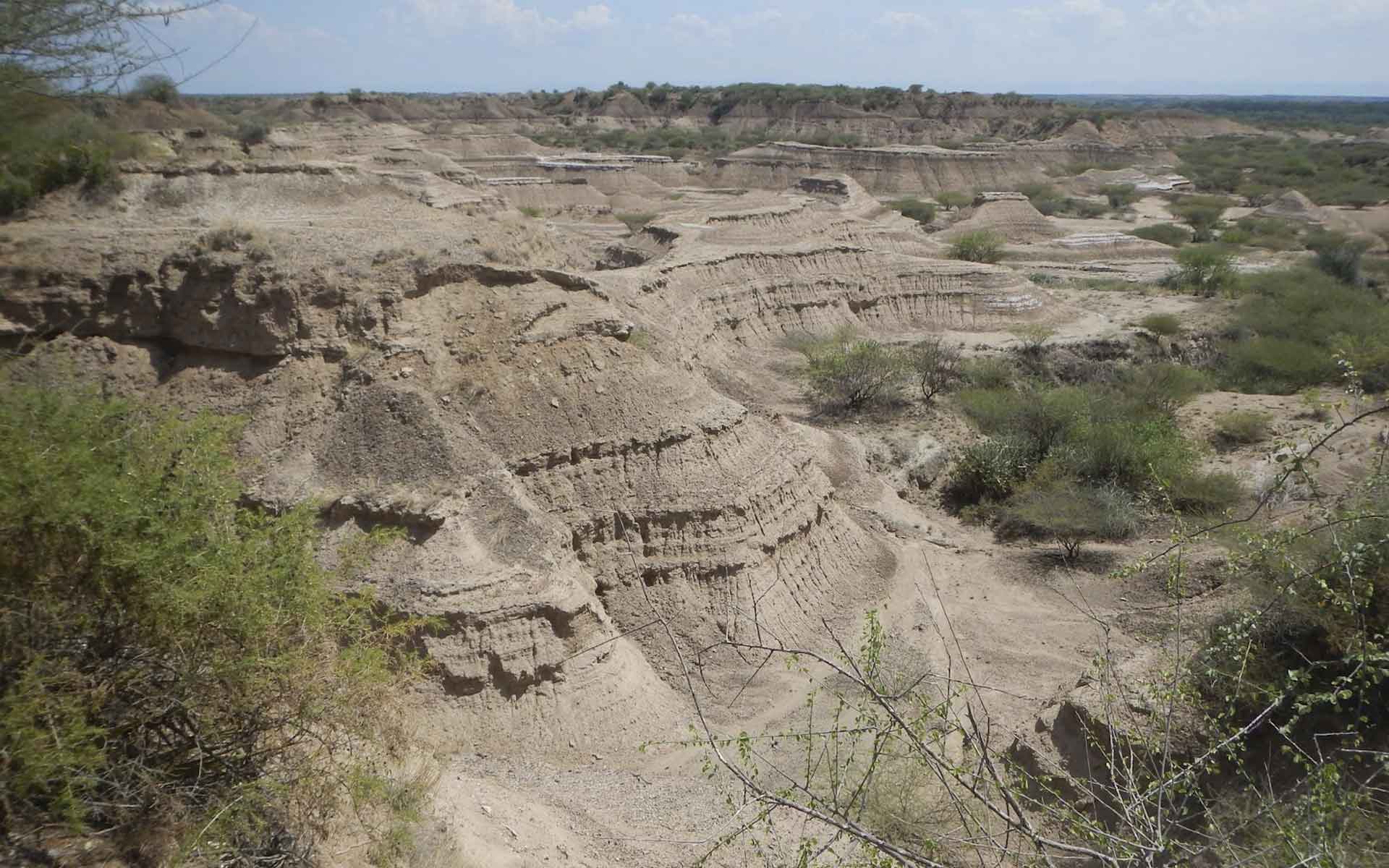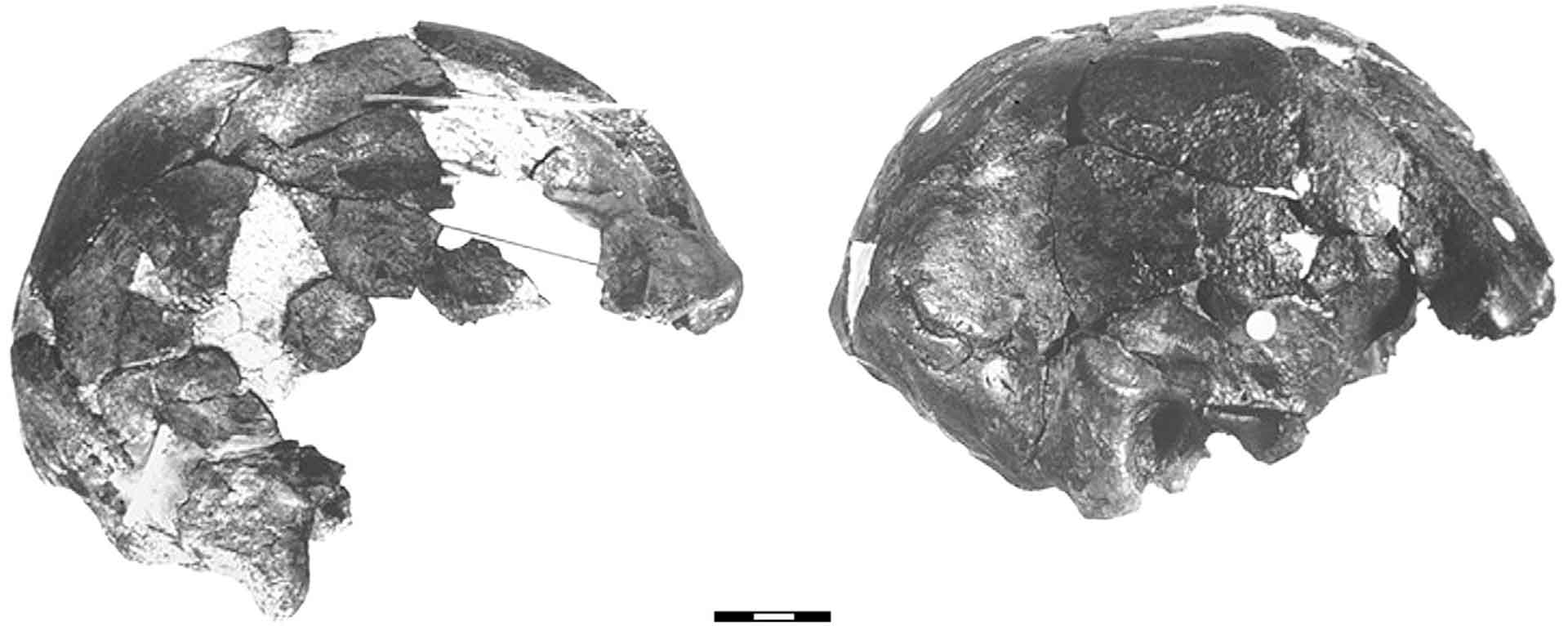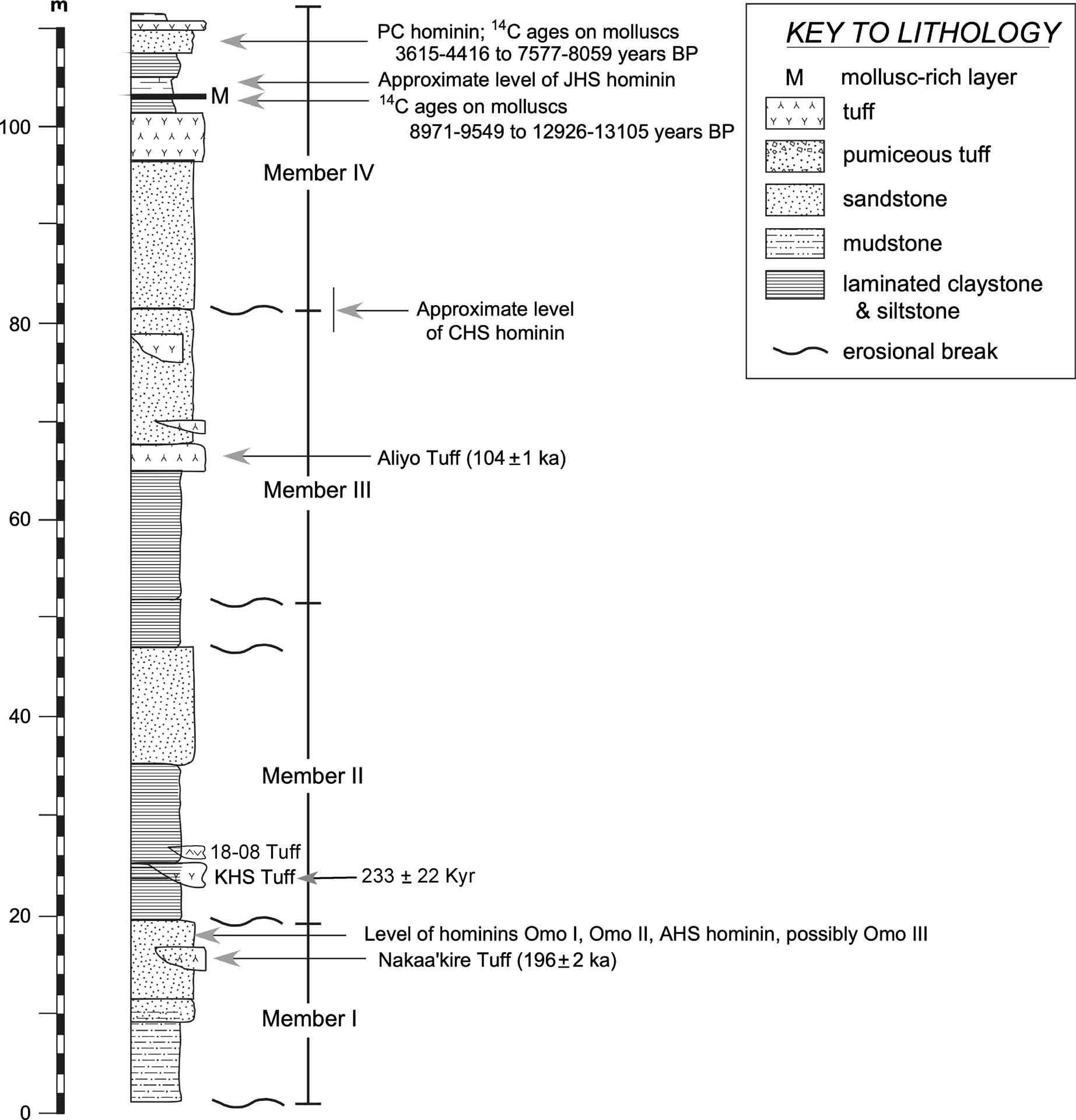
A view of the Kibish Formation exposures at the southern banks of the Omo River (Photograph credit, Celine Vidal).
Geological Period
Pleistocene to Holocene
Main geological interest
Paleontology
Stratigraphy and sedimentology
Location
Southern, Ethiopia
05°18’46”N, 035°56’22”E
A view of the Kibish Formation exposures at the southern banks of the Omo River (Photograph credit, Celine Vidal).
Home of one of the oldest fossils of Homo sapiens fossils within a 105-meter-thick Middle Pleistocene to Holocene lacustrine and deltaic succession.
The Kibish Formation is a unique sedimentary terrain where Omo I (dated to ~233 ka) and Omo II fossils have been discovered. These are some of the oldest known modern human fossils in the world. The Kibish Formation is a well-studied and well-dated formation exposed at the shores of the Omo River. It is located within the Lower Omo Valley, a World Heritage site, inscribed by UNESCO in 1980. The Kibish Formation presents an otherworldly landscape with dissected and eroded layers of all members of the Kibish Formation exposed on either side of the Omo River.
- Geological description
The Kibish Formation at the Lower Omo valley, with an aggregate thickness of 105m consists of lacustrine and deltaic deposits divided into four members (Brown and Fuller, 2008). It is a Middle Pleistocene to Holocene Formation, where two fossils of early Homo sapiens (Omo I and Omo II) were discovered in the lower sections of Member I. The Omo fossils were recently dated to 233 ± 22 kyr based on geochemical analyses that link the Kamoya’s Hominid Site (KHS) Tuff, which conclusively overlies Member I that contains Omo I, with a dated major explosive eruption of Shala volcano in the Main Ethiopian Rift (Vidal et al., 2022). Member I (~20m thick) is composed of sandstones, siltstones, and claystones, with minor tuffs, while member II (~32m thick) consists of a tuff at the base, overlain by uniformly bedded and laminated silty clays, thin sand stringers and fine sandstone. Member III (~30m thick) comprises sandstones with conglomerate lenses and one prominent 3-4m thick tuff at its base, the Aliyo tuff dated to ~104 ka. Member IV (~28m thick) forms laterally extensive deposits of sandstones and laminated silty clays forming the Kibish plain (Brown and Fuller, 2008).
- Scientific research and tradition
The Omo valley has been extensively studied since the 1960s when the Omo I and II fossils were discovered in 1967 within Member I of the Kibish Formation. Since then there have been well-documented studies published in high impact journals in the 1990s, 2000-2018, and recently since 2018 to date.
- Reference
Brown, F.H. and Fuller, C.R. (2008) ‘Stratigraphy and tephra of the Kibish Formation, southwestern Ethiopia’, Journal of Human Evolution, 55(3), pp. 366–403. Available at: https://doi.org/10.1016/j.jhevol.2008.05.009.
Butzer, K.W. and Thurber, D.L. (1969) ‘Some Late Cenozoic Sedimentary Formations of the Lower Omo Basin’, Nature, 222, pp. 1138–1143. Available at: https://doi.org/10.1038/2221138a0.
Fleagle, J.G. et al. (2008) ‘Paleoanthropology of the Kibish Formation, southern Ethiopia: Introduction’, Journal of Human Evolution, 55(3), pp. 360–365. Available at: https://doi.org/10.1016/j.jhevol.2008.05.007.
McDougall, I., Brown, F.H. and Fleagle, J.G. (2005) ‘Stratigraphic placement and age of modern humans from Kibish, Ethiopia’, Nature, 433(7027), pp. 733–736. Available at: https://doi.org/10.1038/nature03258.
Vidal, C.M. et al. (2022) ‘Age of the oldest known Homo sapiens from eastern Africa’, Nature, 601(7894), pp. 579–583. Available at: https://doi.org/10.1038/s41586-021-04275-8.
- Author(s)
Asfawossen Asrat.
Botswana International University of Science and Technology, Palapye, Botswana.


